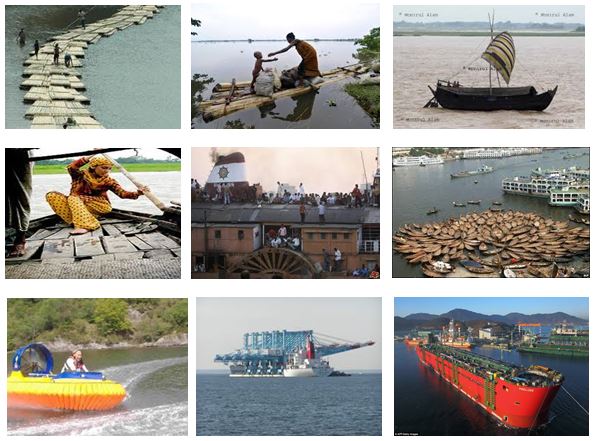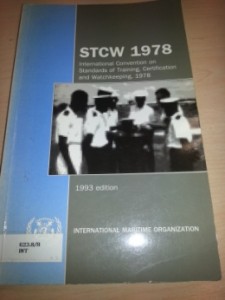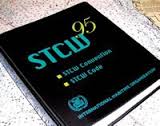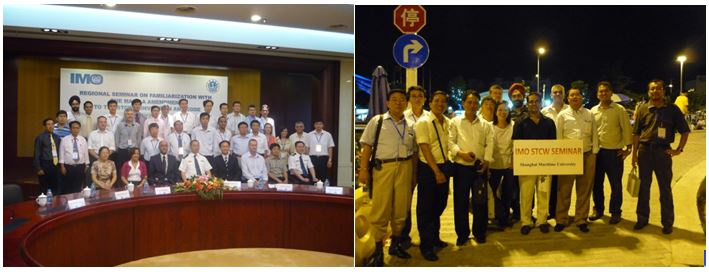![[SMC Magazine ‘নোঙর’] Seafarers’ Certification, Singapore & Implementation of Manila Amendments to the STCW’78 Convention: Zulfiqur Husain (14)](http://bdmariners.org/wp-content/uploads/2014/06/stcw.jpg)
[SMC Magazine ‘নোঙর’] Seafarers’ Certification, Singapore & Implementation of Manila Amendments to the STCW’78 Convention: Zulfiqur Husain (14)
Abstract:
Maritime and Port Authority of Singapore (MPA) is the prominent and competent organisation in Singapore, with respect to Port and Shipping regulatory matters, in Singapore. Singapore is member-State to various IMO (International Maritime Organisation)’s international Conventions and Protocols. Pursuant to one of the IMO’s international convention on Standards of Training Certification and Watchkeeping for seafarers, 1978 (better known as STCW’78 Convention and Code), Singapore issues Certificate of Competency (CoC) for Deck Officers (DO), Marine Engineer Officers (MEO) and other related certificates and endorsements, as applicable in ship’s safe manning document. Certificates are issued to the candidates’ upon meeting relevant requirements of the STCW’78 Convention and it’s subsequent amendments; and as per the national legislations.
The aim of this paper is to inform the readers’ a bit of STCW and the current requirements for maritime education and training for seafarers in Singapore and how to update and revalidate their MPA certificates and to enable them to serve on board ships; in a simplified manner.
Synopsis:
Shipping of cargoes on waters is a primitive and ancient business, – boats and ships made of different materials had been plying over the canals, rivers, seas, or even oceans for several centuries, now. Those people who operate-drive or make the ships to move from one location to another location, – have been there from those ancient sailing days, e.g. be it with oars, wind sails, or steam engines, ….etc. (few snapshots are appended). Those people had learnt the tricks-of-the-trade to operate their vessels themselves or from their predecessors.
Until 1978 the waterfront nations of the world had their own ways of allowing those persons to operate those ‘boats, vessel, or ships’ at their own accords… i.e., at the jurisdiction of their own “Governmental or Administrative powers” and ‘had set their standards’ for certifications or licensing of those seafaring personnel at their own needs; – not following any internationally set guidelines or had compared the qualifications or competencies amongst other countries.
An example of images of Singaporean pre-liberation certificate of 1909 is appended, but the training qualification is not available at this point of time:
Requirements of seafarers Certification
This is pertinent to add here that some of the current ships or modern vessels could have assets worth hundreds of millions of Singapore dollars, when they are in loaded condition. No cargo-owner or ship- owner, would want their such expensive assets to be at the mercy-of peoples’ who are not qualified or competent to operate the ships from one location to another location safely and securely, which may also entail in polluting the environment; Or in the hands of personnel who are unable to take actions to prevent accident, or to minimise the effects of damage from the accident or to prevent pollution, and protect, the only environment, we have to live-in; from shipping calamities; and bear the severe consequences monetarily or otherwise.
These ship owners or operators could be Bankers or Institution/s, who may have limited or no knowledge about ships’ day-to-day operations, – but had grossly reliant on the competent people and the regulatory frame-works; e.g. certifying the ships and licensing the personnel who operate these ships. The appended illustration shows international shipping routes on the world map, which require certificated competent personnel to operate the ships otherwise the ship’s insurance would be void..
The seafarers’ certification Journey:
Since the international convention on Standards of Training Certification and Watchkeeping for seafarers (STCW’78) Convention, which was adopted on 7 July 1978 (the first major unified step), then International Maritime Organisation (IMO) had to struggle for about another 6 more years (from each member State countries till 28 April 1984) for agreeing to ‘Entry into force’ for a minimum standards of training and certification known as STCW’78 Convention, globally. The Entry process was tedious namely – meeting-of-minimum of 12 months of adaption period, and not less than 25 States had to accede the proposed Standards, and that must comprise 50% of world shipping Gross Tonnage (a measurement of ship’s size).
STCW Structure (Mandatory & Recommendatory)
The STCW Code:
The Parties (the other name for a member country) to the STCW’78 Convention had by establishing a common agreement and agreed with Seventeen articles (of the convention) to promote the safety of life at sea and protection of environment (the main motto). There are five chapters (i.e. the main areas to deal) and with minimal (set) requirement information for the initial start of the Convention’s maiden voyage.
Since the STCW’s journey commence in 1984 and having agreed to a “Standard” frame work for seafarers training and certifications. It was expected that its requirements would ensure globally unified competency for all seafarers at their respective levels, and reflect the highest practical standards which could be globally agreed at the time of adoption, but certain flaws remain in the first and initial batch of STCW’78 version texts and structures. The main causes were lack of precision in standards, interpretations were left to satisfaction of the administration; hence widely varying standards and Parties failed to administer and enforce Convention requirements uniformly and strictly.
Just to add a bit more jargons of the STCW here now, that the subsequent amendments was known as STCW’95 (was enter into force on 7 July 1995, implemented on 1 Feb 2002); the regulations (rules) contained in the Convention are supported by sections in the STCW Code (i.e. similar to rule-book’s annexes). Generally speaking, the Convention contains the mandatory requirements which were then expanded and explained in the Code.
The Part A of the Code is mandatory, and contains the minimum standards of competence required for seagoing personnel, and are given in detail in series of tables. The Part B of the Code contains recommended guidance which is intended to help Parties to implement the Convention. These are not mandatory and the examples provided are only intended to illustrate how certain Convention instruments or requirements may be complied-with and have unified interpretations amongst the Parties. These recommendations in general, represent an approach that has been harmonized by discussions within IMO and consultation with other international organizations, like ILO (International Labour Organisation) or WHO (World Health Organisation).
STCW2010 ‘BUZZ word”
By now you all seafarers may be aware of STCW2010 (Manila Amendments to the STCW Convention and Code) at the halfway mark of the implementation date. But please allow me to elaborate further what happened behind the scene, what preparations MPA have taken, or / and how Singapore was involved in this STCW2010 amendments and in implementation.
STCW2010 initiation at the STW36 (IMO former Sub Committee)
In 2006 the IMOs Maritime Safety Committee (MSC) at its 81st session (MSC81) endorsed the proposal of STW37, – to amend the STCW’95 and provided the Term Of Reference (TOR) for the amendments i.e. what to do or what not to do (this IMO’s way of working, so that work doesn’t expand beyond the scope; – in a simplified version). Which included to retain the structure and goals of the STCW’s 1995 revision; not to down scale existing standards; not to amend the articles of the Convention; address inconsistencies, interpretations, outdated provisions, and clarifications already issued; and technological advances; address requirements for effective communication; provide for flexibility in terms of compliance and for required levels of training and certification and watchkeeping arrangements due to innovation in technology; address the special character and circumstances of short sea shipping and the offshore industry.
Adoption of STCW2010 at Manila
Singapore actively participated in all IMO annual meetings, biannual meeting and various correspondence groups, etc. By 2010 June the “Manila Amendments” to STCW’78 Convention were adopted at a Diplomatic Conference in Manila, the Philippines; and aimed at ensuring that the necessary global standards were put in place to train and certify seafarers to operate technologically-advanced ships for some time to come…
The important changes to each chapter of the Convention and Code include the following, e.g. update standards particularly in-light of emerging technologies, methodologies and improve mechanisms for enforcement, and details requirements on hours of work and rest, prevention of drug and alcohol abuse, and medical fitness standards for seafarers. The printed version of Manila Amendment to STCW book is as shown below, is now available on book stores:
Transitional provisions
Before the new Manila Amendment to the STCW’78 requirements kicks-in on 1 January 2017, the STCW Party may continue to issue, recognize and endorse certificates in accordance with the provisions of the Convention which applied immediately prior to 1 January 2012 (i.e. during the STCW’95 era), for those seafarers who commenced approved seagoing service or an approved education and training programme or an approved training course before 1 July 2013 (i.e. training commenced before STCW2010 convention). The revalidation of certificates issued pursuant to STCW’95 or earlier regime could be validated up to 31 Dec 2016; and all the countries had been following the similar suite.
Preparation for STCW2010 Implementation by administration:
IMO after finalising the implementation date of Manila Amendments from 1 Jan 2017, had organised workshops, seminars, and various other training initiatives so that all the STCW Parties are ready to embrace and enforce the new requirements. The Port State Control Officers (PSCO) can exercise the power vested on them to detain a ship on grounds that the vessel is not ‘properly man’ with qualified personnel as per the ship’s safe-manning document (SMD); be-it Deck Navigating officer, Marine engineer officer, rating or a Cook. The Flag State Officers’ similarly ensures that their registered vessels are man by suitably qualified officers and ratings.
One of STCW2010 first seminars which was held at Shanghai just three weeks after the Manila Conference; photographs of the Regional seminar and a visit to 2010 Shanghai World Expo venue is shared. Singapore under the leadership of MPA, had actively participated in the workshop and contributed significantly to other 30 participants to the workshop, on Singapore’s experience and implementation plan of STCW2010.
Work commenced on implementation of STCW2010
Amendment to Legislation:
Singapore, like many other countries commenced amendments to its legislation, to give full effect to the new amendments of STCW, in the Merchant Shipping (Training Certification and Manning) Regulations in 2011 and in 2013 to give effect to Maritime Labour Convention (MLC2006) regulations [the Singapore legislation on seafarers’ certification requirements].
Circular to notify:
MPA, issued Shipping Circulars related to standardisation of Medical fitness and other requirements, and updated on training requirements related to Shipboard security related trainings. MPA, also proposed to IMO, for deferment of implementation date of Ship Security Awareness and Designated shipboard security duty course certifications; as the biggest supplier of seafarer nation Philippines was unable to complete issuance of Ship Security awareness and Designated Shipboard Security duty course’s certification by 1 Jan 2014. The Philippines seafarers’ forms about 20-25% of manning of Singapore registered ships.
Singapore Registry of Ships:
It will be appropriate to mention here that the Singapore Registry of Ships had climbed from seventh position in 2002 (with about 23.5 MGT) to fifth position in 2013 (with about 75 MGT) in a decade. This is due to the various Government pro-business policy to attract ship-owners’ in Singapore, with a Vision, to be a leading maritime agency driving Singapore’s global maritime aspirations. And Mission, to develop and promote Singapore as a premier global hub port and an international maritime centre, and to advance and safeguard Singapore’s strategic maritime interests.
Undertaking signing with STCW Parties (Regulation I/10):
Eighty-one countries had signed Undertakings with Singapore for recognition of certificate, and sixty countries recognise Singapore’s Maritime Education Training and Certification. Many more such undertaking signing requests are being received, recently. The journey is not smooth, – full of challenges, sometime long hours are necessary to read through other countries education and training matters and the Undertaking’s clauses, which needed eagle-eye to read between the lines, so that Singapore or Singaporean certificate holders are not disadvantaged.
Training Service Providers (TSP):
MPA started alerting all its approved Training Service Providers (i.e. Training institutes) by providing regular updates from IMO meetings and guiding them with the implementation activities and processes. Singapore Maritime Academy (SMA) being the prime and closest of all TSPs, MPA had regular sessions of dialogues with their top management and person-in-charge to explain and facilitate the implementation process. In this way we put into perspective of all Deck Officers, Marine Engineer officer, courses’ competence table, new professional and ancillary courses (where necessary) to give complete effect to the STCW2010 Convention’s new requirements. Also advising on building up of infrastructure where necessary, e.g. High voltage installation labs and courses, Bridge and engine room resource management courses, Teambuilding and leadership courses; ancillary revalidation courses, etc. in TSPs premises.
Due to MPA’s persistence support and guidance, and also from SMA management’s strong determinations to deliver, SMA had been acquiring many accolades locally and internationally. These graduates are accepted by the shipping companies for seafaring employment and some hold well respected position in various organisations and continuing to do well in their pursuits.
Shipping Forum with industry:
MPA officers had delivered many presentations and information sharing on the Manila Amendment, through the Shipping forums, or Organising meetings, to encouraged and engage industry partners or training courses providers to generate awareness and to embrace the new requirements and ultimately to enhance the seafarers competency-proficiency.
Works with Partners on implementation of STCW2010
MPA in consultation with iDA (infocomm Development Authority of Singapore), seafarers Unions (Singapore Maritime Officer Union- SMOU) and Singapore Ship-owners Association (SSA), professional bodies like Singapore Nautical Institute (SNI), Society for Naval Architecture and Marine Engineers Singapore (SNAMES) and Training Service Providers (TSP)s; to prepare documents or curriculum for STCW2010. MPA had also engaging overseas approved TSPs on planning, monitoring the progress, and taking appropriate measures; for effective and timely implementation of STCW2010, for Singapore certification.
Works within the Administration on implementation of STCW2010
New formats of Certificate of Competency (COCs), Certificate of Proficiency (COPs), Documentary Evidences (DE) new Tanker endorsements for Immediate Responsibility or Assigned Responsibility being developed and introduced. COC-Examiners are undergoing relevant training-courses to keep-up the pace. Upgrading of the MPA e-applications to cater for and accommodating of all about 70 types of e-certification by MPA, in MPA website, 24/7. Shipping Circular is being prepared for new courses and MPA COC updating and revalidation requirements are being prepared; and will be published, soon.
Reporting to IMO
Submission of documents to IMO as per STCW Regulation I/7 (to report to IMO Secretary-General) of Singapore’s full and complete effect given to the STCW’78 amended Convention, and also STCW Regulation I/8 (Quality standards reporting) as per the 5-yearly cycle, – reports will be prepared and sent to IMO in due course.
Updating of Singapore issued Certificate of Competency:
The Singapore issued Certificate of Competency can be updated by
(a) attending the updating requirements for technical competency such as :
(b) Additionally training related ship board security

(c) By completing within last 5 (five) years, sea service experience:
- a. appropriate for the rank for 12 (twelve) months
b. Appropriate for the rank for 3 (three) months in preceding 6 months.
c. Supernumerary for three months on preceding 6 months,
Or
d. A shore job (considered as equivalent) for 30 months in preceding 5 years
Or
e. By attending of an appropriate revalidation course to update the technical competency;
Other queries could be directed to MPA for response accordingly. New revalidations courses are approved and made available to the seafarers in modular format, so that the SMA’s current curriculum is not disturbed, while revalidation courses could be run and seafarers could attend the updating requirements or courses.
New initiatives:
Singapore has embark on new initiative to train locals for working in Port Limits Harbour Craft or in Singapore Near-coastal voyages (30 Nautical mile radius of Singapore); to those who are not willing or unable to sail on foreign going ships (away from home for prolonged period). Nitec or Higher Nitec graduates can also embark in these training routes, currently stipend is awarded to meritorious students to take up these professional courses.
Conclusion:
MPA had prepared and put-in place all requirements for embracing of the Manila Amendments to the STCW’78 Convention, including the electronic means of availability of seafarers’ certification authentication on-line, – IMO’s one of the STCW2010 requirements. The seafarers’ can apply for certification on-line, it will be more user friendly, so that all supporting documents can also be attached & uploaded to the application and is available 24/7, worldwide. This paperless initiative for certification database is also a step towards green movement. A common (i.e. DO & MEO same type) new COC booklet with additional security features, but without compromising the tangible looks; had also been introduced. All these make Singapore in the leading position and a chosen destination for maritime education, training and certification.
*****************

Acknowledgement: Some images were taken from the internet, to save time from collection individually; thanks to the sources.
[Mr Zulfiqur Husain (14) joined the Maritime and Port Authority of Singapore (MPA) as an Investigation and Certification Officer in 2000. He was responsible for the investigation of incidents and accidents in Singapore waters and those involving Singapore-registered ships; including in investigation team on collision of MV. ANL Indonesia and RSS Courageous, in 2003. He is working as , Senior Marine Surveyor in MPA
He administers the oral examinations for Marine Engineer Officer (MEO) candidates for Singapore Certificates of Competency. Sets standards for MEOs for Singapore seafarers Certifications and Recommend requirements to the management, for endorsement. He conducts audits on training institutes whether they comply-with those set standards.
He also proposes standards for Singapore Bunker Surveyors, Bunker Cargo Officers, and Port Limit Engine Drivers trainings and examinations. Foreign country Signing preparations for the Undertakings, pursuant to the STCW’78 Convention’s Regulation I/10 for seafarer certification recognitions matters. He also has attended IMO STW- Sub Committee meeting.
He holds MSc (Maritime Studies) from Nanyang Technological University, Singapore; in 2012 and Master of Business Administration (MBA) from University of Leicester, UK, in 1995 . He obtained his Certificate of Competency Class 1 (Marine Engineering Officer) from the UK in 1986.]
He started serving as 5th Engineer in NOL/NSSPL in 1982, before being promoted to Chief Engineer Officer in 1988 and left in 1992 for shore-job in GASINDO. Prior to joining MPA, he held positions Technical Superintendent, Operations Manager, VP Operations, in several maritime companies, including Mitsui OSK line (S) Pte/Navix Lines, and International Maritime Carrier (IMC).












![[SMC Magazine ‘নোঙর’] Acknowledgement & Our Sponsors](http://bdmariners.org/wp-content/uploads/2014/07/Cover_-220x180.jpg)
![[SMC Magazine ‘নোঙর’] SMC – Road Map](http://bdmariners.org/wp-content/uploads/2014/07/IMG_2251-220x180.jpg)
![[SMC Magazine ‘নোঙর’] জাহাজী জোকস – একটু হাসুন](http://bdmariners.org/wp-content/uploads/2014/07/Jokes_Pics-220x180.jpg)


![[নোঙর 2016] আমার সেরা বিদেশ ভ্রমন : নাফিসা মাশহুরা ইরা](http://bdmariners.org/wp-content/uploads/2016/06/Dubai-city-tour-70x70.jpg)




Recent Comments